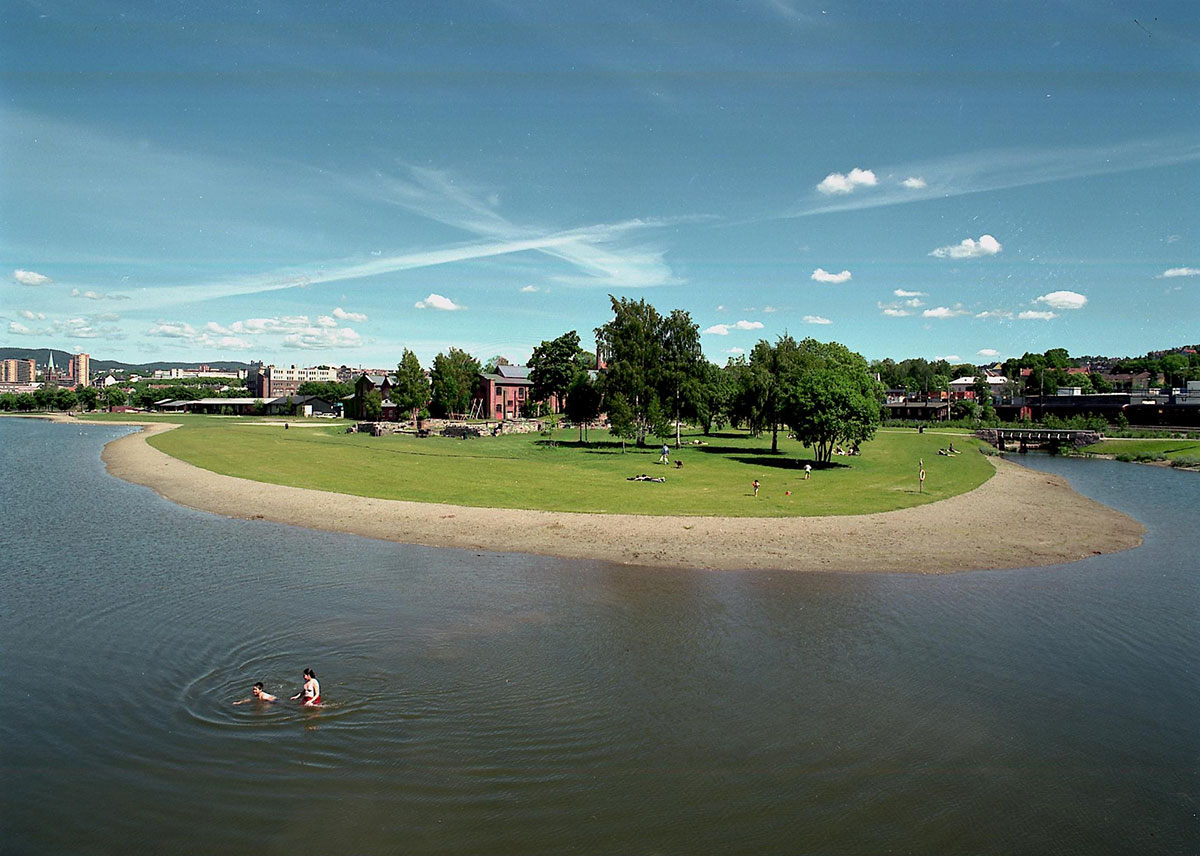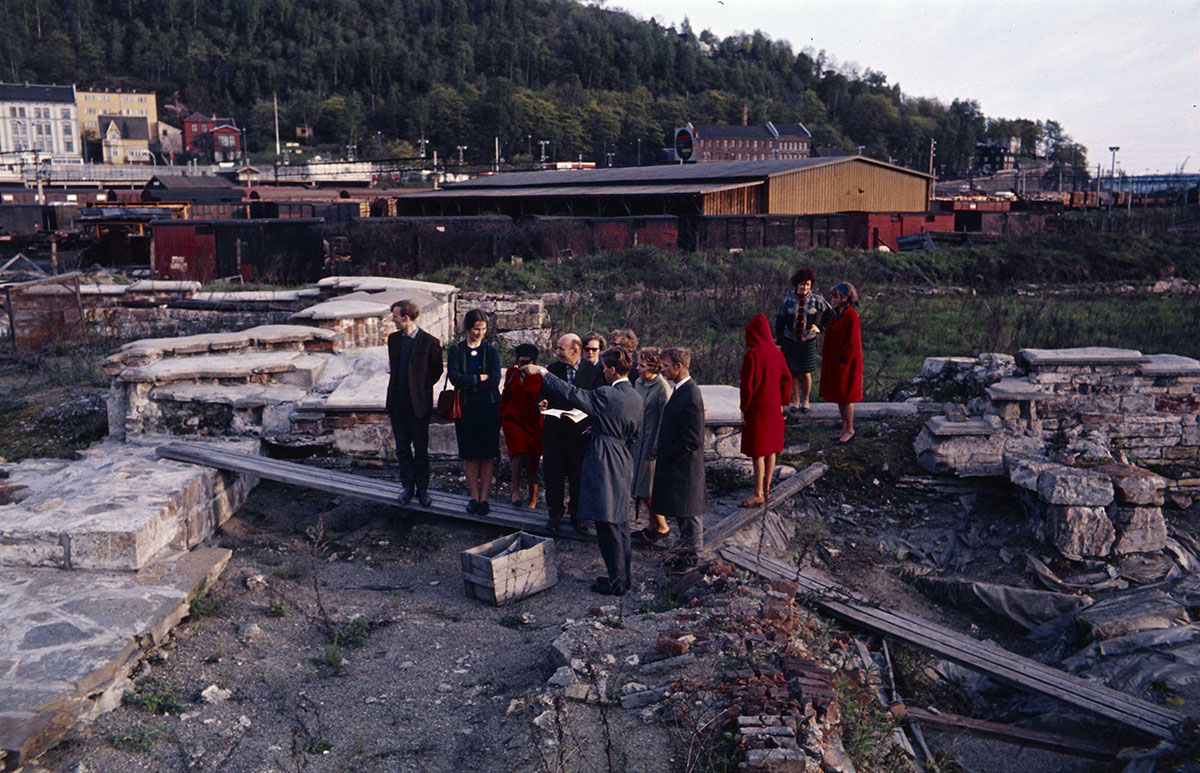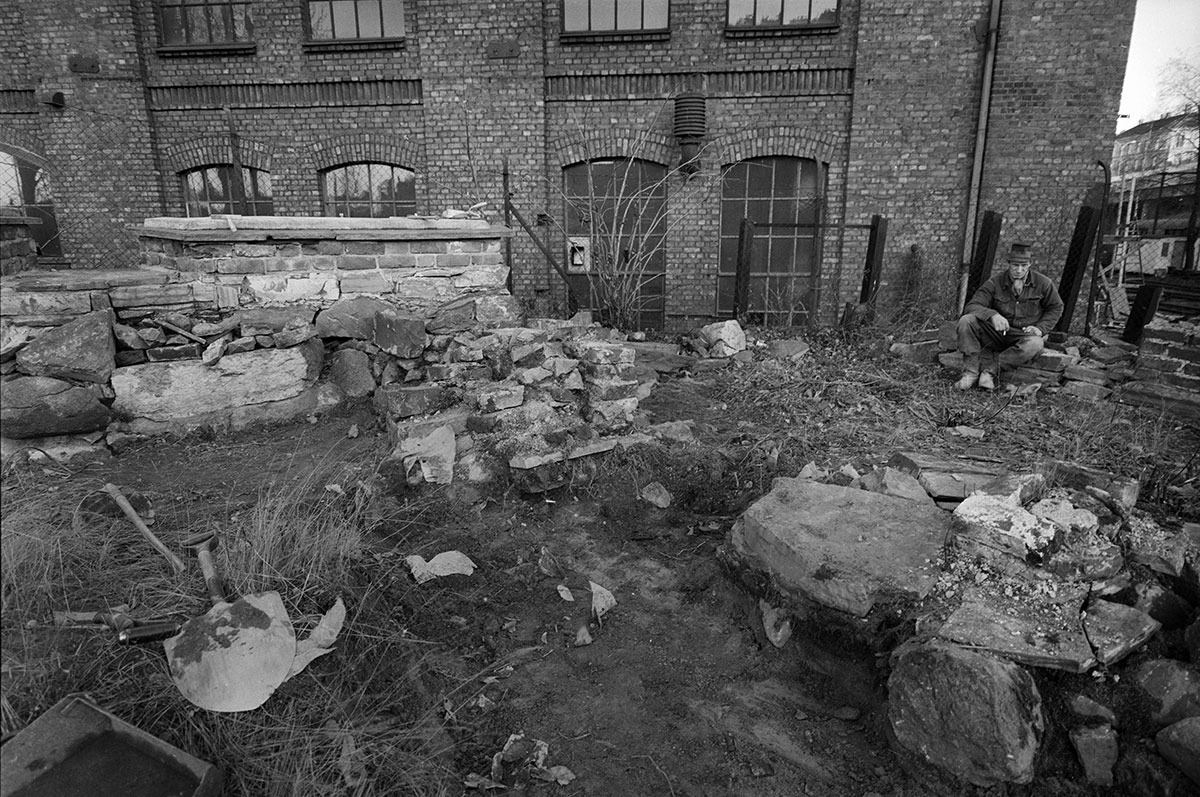The Nordic region's largest ruin area
The Medieval Park is part of the Medieval Park area together with Minneparken and Oslo Ladegård. This area is the Nordic region's largest contiguous preserved ruin area. The ruins in The Medieval Park are from St. Mary's Church, St. Clement's Church and the Oslo Kongsgård estate.
On the west side of the park is a pool of water with a reflecting surface, a reflecting pool, that has been nicknamed Tenerife. The Medieval Park has previously been home to both Øyafestivalen (2001-2013) and the Oslo Medieval Festival (1994-2013). Today, the Follo train line with the Blix tunnel is located directly below the park.

St. Mary's Church
St. Mary's Church was a church at the foot of Ekeberg and is believed to have been built for the first time in the middle of the 11th century. The church was the king's own church, and the ruins of the foundation wall are still in The Medieval Park.
The oldest version was a single-nave wooden building which was later converted into a stone church and expanded several times. Around the year 1300, St. Mary's Church underwent a major rebuilding and became a large brick church. The nave was extended westwards, got two new towers in the west and a new cross-shaped chancel.
St. Mary's Church burned down in 1523 and was so dilapidated in 1542 that it could no longer be repaired. Thus, the church was razed to the ground. It had a religious function but was most important as a political institution and state administration in the time before the Reformation. King Håkon V was buried in St. Mary's Church.

St. Clement's Church
St. Clement's Church is estimated to have been built around the year 1100, but it is believed that there have been two to three wooden churches on the same site before it. The first church may have been founded by Olaf II Haraldsson (Olaf the Holy) or Olaf Tryggvason. The last wooden church was probably built at the request of Harald Hardrada.
In the area around the church there has been found remains of one of the country's oldest cemeteries. The oldest graves are radiologically dated to 980-1030. These are some of the oldest Christian graves found in Norway, which indicate a well-established Christian community in the area already before the year 1000.
The Medieval Park and the ruins after this church are located in the Gamle Oslo district, and it is in the area around the burial ground of this church that the first urban settlement of the city began to take shape.
St. Clement's Church was a stone church with a corner tower and is one of the few churches we know of with a two-nave ground plan. The church went out of use after the Reformation and was probably left in ruins shortly after. The ruins that remain today after the church have a protected conservation status.

External films
Watch the film "Her hviler- Oslo's cemeteries, 1953" on youtube.com